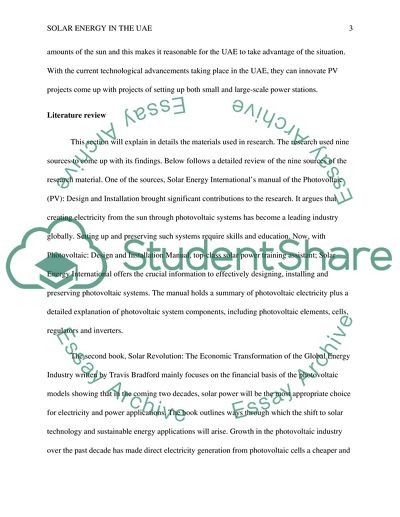Cite this document
(“Solar Energy in the UAE Research Paper Example | Topics and Well Written Essays - 2500 words”, n.d.)
Solar Energy in the UAE Research Paper Example | Topics and Well Written Essays - 2500 words. Retrieved from https://studentshare.org/technology/1770747-research-paper-solar-energy-in-the-uae
Solar Energy in the UAE Research Paper Example | Topics and Well Written Essays - 2500 words. Retrieved from https://studentshare.org/technology/1770747-research-paper-solar-energy-in-the-uae
(Solar Energy in the UAE Research Paper Example | Topics and Well Written Essays - 2500 Words)
Solar Energy in the UAE Research Paper Example | Topics and Well Written Essays - 2500 Words. https://studentshare.org/technology/1770747-research-paper-solar-energy-in-the-uae.
Solar Energy in the UAE Research Paper Example | Topics and Well Written Essays - 2500 Words. https://studentshare.org/technology/1770747-research-paper-solar-energy-in-the-uae.
“Solar Energy in the UAE Research Paper Example | Topics and Well Written Essays - 2500 Words”, n.d. https://studentshare.org/technology/1770747-research-paper-solar-energy-in-the-uae.


